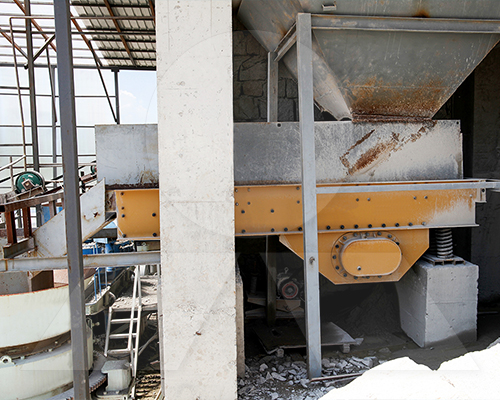The Role of Vibrating Feeders in Artificial Sand Production: Enhancing Efficiency and Output
In the production of artificial sand, vibrating feeders play a crucial role in ensuring a smooth and efficient manufacturing process. These machines are designed to handle and transport raw materials such as rocks, gravel, and other aggregates from the storage area to the crushing and screening units, where they are processed into high-quality sand. The use of vibrating feeders in this context significantly enhances productivity and ensures a consistent output of artificial sand.
Optimized Material Flow
Vibrating feeders are essential in regulating the flow of raw materials in artificial sand production lines. By controlling the amount of material fed into the crusher, these feeders help prevent overloading and ensure that the crushing equipment operates at its optimal capacity. This precise control over material flow not only improves the efficiency of the crushing process but also extends the lifespan of the machinery by reducing unnecessary wear and tear.
Consistency and Uniformity
One of the key benefits of using vibrating feeders in artificial sand production is their ability to provide a consistent and uniform feed of materials. This is particularly important in the production of sand, where the quality of the final product depends on the even distribution of raw materials. Vibrating feeders ensure that the materials are fed into the crushers at a steady rate, resulting in a more uniform particle size distribution and higher-quality artificial sand.
Versatility and Adaptability
Vibrating feeders are highly versatile and can be adjusted to accommodate different types of materials and production requirements. Whether dealing with coarse gravel or fine aggregates, these feeders can be fine-tuned to ensure the optimal flow of materials. This adaptability makes them suitable for a wide range of applications in artificial sand production, from small-scale operations to large industrial plants.
Reducing Operational Costs
By optimizing the material flow and ensuring consistent feeding, vibrating feeders contribute to reducing operational costs in artificial sand production. They help minimize energy consumption by ensuring that the crushing equipment operates efficiently, and they also reduce the need for manual labor in managing material flow. Additionally, the durability of vibrating feeders means that they require minimal maintenance, further lowering the overall cost of production.
Enhancing Productivity
In the fast-paced world of artificial sand production, time is of the essence. Vibrating feeders help enhance productivity by streamlining the material handling process. With their ability to handle large volumes of material and deliver it efficiently to the crushers, these machines significantly speed up the production process, allowing manufacturers to meet high demand for artificial sand.
Conclusion
Vibrating feeders are indispensable in the production of artificial sand, offering numerous benefits that enhance efficiency, consistency, and productivity. Their role in regulating material flow, ensuring uniform feeding, and reducing operational costs makes them a critical component in any artificial sand production line. For manufacturers looking to optimize their processes and produce high-quality sand, investing in reliable vibrating feeders is a strategic move.
- > High-Quality Stone Vibrating Feeder: The ZSW Series
- > Applications of Mobile Cone Crushers in Secondary Crushing for Sand and Gravel Aggregate Plants
- > Application of Multi-cylinder Cone Crusher in Hard Rock Crushing
- > Durable PFW Series Impact Crusher: Optimizing Performance for Modern Crushing Needs
- > Efficient 100 TPH Mobile Cone Crusher for South African Mining Operations
- > Vibrating Feeders Tailored for Crusher Sizes: Enhancing Efficiency in Material Handling
- > The Role of Jaw Crushers in the Cement Industry
- > How to Choose the Right Jaw Crusher for Efficient Mineral Processing in Africa?
Hot Product


Online




Message

